Ever felt that annoying ache between your shoulder blades that just won’t quit? You’re not alone. Rhomboid pain is a real pain in the, well, back. But guess what? We’ve got your back – literally. In this blog, we will explore the various aspects of rhomboid pain, from understanding its causes and diagnosis to discussing effective treatment options and strategies for a smooth road to recovery.
So, if you’re tired of putting up with the ache, join us on this journey. Let’s get started!
Contents
Understanding Rhomboid Pain: Exploring the Symptoms & Causes
 Wondering why your back is giving you a hard time? Well, let’s unravel the mysteries behind rhomboid pain by exploring its symptoms and digging deep into the root causes.
Wondering why your back is giving you a hard time? Well, let’s unravel the mysteries behind rhomboid pain by exploring its symptoms and digging deep into the root causes.
Symptoms:
- Persistent aching between the shoulder blades
- Sharp or stabbing pain with certain movements
- Tenderness in the upper back region
- Limited range of motion in the shoulders
- Discomfort that may radiate to the neck or arms
Causes:
- Poor posture, especially sitting for prolonged periods
- Muscle strain or overuse from repetitive motions
- Injury or trauma to the upper back or shoulder area
- Pinched nerves in the cervical or thoracic spine
- Muscle imbalances or weakness in the back muscles
- Stress and tension leading to tightened muscles
Discovering the symptoms and causes is the first step to understanding rhomboid pain. Stay tuned as we delve deeper into effective techniques and solutions to alleviate your discomfort.
Treatment Options Available to Fix Rhomboid Muscle Pain!

Transitioning from discomfort to relief is our goal, and we’ve got a toolkit of effective treatments to make it happen. Say goodbye to that nagging rhomboid muscle pain with these tried-and-true options:
- Hot and Cold Therapy: Alternate between heat packs and ice packs to reduce inflammation and soothe muscle soreness.
- Gentle Stretching Exercises: Engage in specific stretches targeting the rhomboid muscles to improve flexibility and alleviate tension.
- Over-the-Counter Pain Medications: Non-prescription pain relievers like ibuprofen or acetaminophen can help manage pain and reduce inflammation.
- Posture Correction: Focus on maintaining good posture to alleviate strain on the rhomboid muscles and prevent further discomfort.
- Massage Therapy: Professional massages can target and release tension in the rhomboid muscles, promoting relaxation and pain relief.
- Physical Therapy: Work with a physical therapist to develop a customized exercise plan aimed at strengthening and rehabilitating the rhomboid muscles.
- Invasive Treatments (if necessary): In severe cases, medical interventions like injections or surgical options may be considered, under the guidance of healthcare professionals.
There you have it – treatment options for tackling rhomboid muscle pain. These serve as your toolkit for reclaiming comfort and mobility. Remember, everyone’s journey to relief is unique, so feel free to explore and find what works best for you.
Exercises That You Can Do to Ease the Pain
Dealing with rhomboid muscle pain? These targeted and effective exercises can work wonders in providing relief and building strength in the affected area.
Shoulder Blade Squeeze
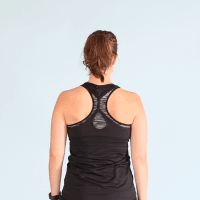
- Sit or stand with a straight back.
- Squeeze your shoulder blades together.
- Hold for 5 seconds, then release.
- Repeat 10 times.
Side Arm Stretch
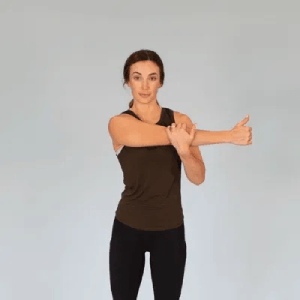
- Stand with feet shoulder-width apart.
- Reach your right arm across your chest.
- Use your left hand to gently pull your right arm closer.
- Hold for 15-30 seconds, then switch sides.
Prone Lateral Raise
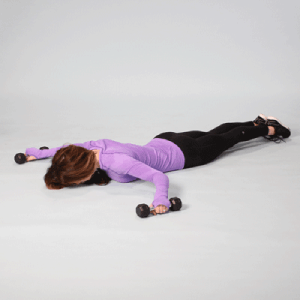
- Lie on your stomach, arms extended in front.
- Lift your arms off the ground, keeping them straight.
- Hold for 5 seconds, then lower.
- Repeat for 10 repetitions.
Thoracic Extension
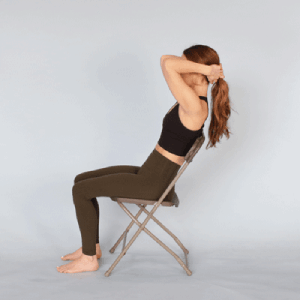
- Sit or stand with hands behind your head.
- Gently arch backward, focusing on your upper back.
- Hold for 10 seconds, then return to the starting position.
- Repeat 10 times.
Doorway Stretch
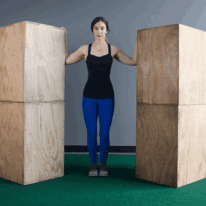
- Stand in a doorway with your hands on the frame at shoulder height.
- Gently lean forward, feeling a stretch in your chest and shoulders.
- Hold for 15-30 seconds.
Rotator Cuff Exercises
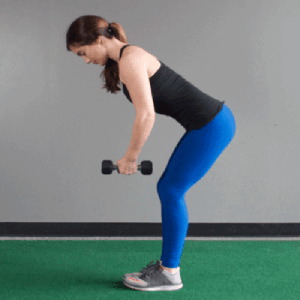
- Hold a light dumbbell in your hand.
- With a bent elbow, lift your arm to shoulder height and lower.
- Perform 3 sets of 10 repetitions on each side.
Locust Pose

- Lie on your stomach with arms by your sides.
- Lift your chest, arms, and legs off the ground.
- Hold for 10 seconds, then lower.
- Repeat 5 times.
Child’s Pose

- Kneel on the floor with your toes together and knees apart.
- Reach your arms forward and lower your chest to the ground.
- Hold for 30 seconds, focusing on breathing deeply.
Incorporate these targeted exercises into your routine to specifically address rhomboid pain and promote a stronger, more resilient back. Remember to perform them regularly and consult with a healthcare professional as needed. Let’s work towards a pain-free back together!
How Long Will It Take to Recover?
The journey to recovery from rhomboid muscle pain is as unique as you are. The duration it takes to heal depends largely on the severity of the strain. Here’s a general guideline to give you an idea:
- Mild Strains:
- Typically, mild strains can see significant improvement within three weeks.
- Consistent rest, gentle exercises, and proper care can speed up the recovery process.
- Moderate Strains:
- If your strain falls in the moderate category, be patient.
- Recovery might take a bit longer, spanning several weeks to a couple of months.
- Following a well-structured rehabilitation plan is key.
- Severe Strains:
- More serious strains may require an extended recovery period.
- Healing may take several months, necessitating a commitment to a comprehensive rehabilitation approach.
Remember, incorporating exercises gradually is crucial to effective recovery. Rushing into intense workouts can potentially prolong healing time or lead to setbacks. Remember to listen to your body, follow your healthcare provider’s advice, and introduce exercises progressively to strengthen the rhomboid muscles without causing further strain.
Conclusion
In navigating the realm of rhomboid muscle pain, understanding, and action go hand in hand. Armed with insights into symptoms, causes, effective exercises, and recovery timelines, you’re well on your way to a pain-free back.
As you embark on this journey, remember that healing is a unique process, and patience is your ally. Consistent efforts, gradual exercises, and a mindful approach are your companions on the road to recovery.
If you find yourself seeking expert guidance or personalized assistance in managing shoulder pain, consider reaching out to PhysioMantra. Our online physical therapy sessions are tailored to address your specific needs, guiding you towards a healthier, pain-free you. Book your online therapy session today and let’s work together to reclaim your comfort and mobility. Your journey to rhomboid relief starts now!



